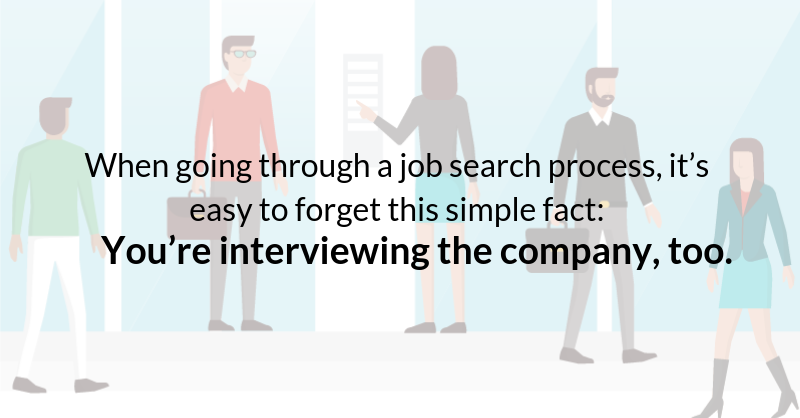
Gearing up for Growth: Where to Start Once You're Ready to Recruit
Kristy Nittskoff, founder and CEO of Talent-Savvy, shares five steps to connect with your ideal candidates via a strategic recruitment process.
You built the case, ran the numbers, and pushed your team past the limit of their bandwidth: it’s time to hire. Digging up last year’s job posting and blasting it to the masses is no longer an effective way to find your next employee. Let's be honest, was it ever? Now it’s time to get thoughtful about finding your newest team member, make a recruitment plan and stick to it, and land the best possible candidate for the job.
I know, I know, that sounds like a lot of extra work. And isn't that what the recruiter is for? Yes, it will take additional time and effort on your part (trust me, it's worth it). Yes, the recruiter is there to strategize and execute the process (among a long list of other things that are beyond the scope of this post). But it's the hiring manager who will work with the new employee on a daily basis - the recruiter can’t have deep enough insight into the specific needs for every role. Below are 5 steps to set your team up to find, secure, and retain top talent.
1. Define What You're Looking For
Sounds like a no-brainer, but it's a step that is often skipped over in favor of "just get it posted." Unfortunately, the second part of "just get it posted" is often "and see what comes in." This is a huge waste of company resources, as well as candidate time. Avoid this by ensuring a hiring manager/recruiter meeting takes place to kickoff the recruitment process, otherwise known as the recruitment intake meeting.
The recruitment intake meeting must cover the basics including: ideal candidate profile, salary range, interview team (more on that later), job location, etc. More importantly, the process should focus on questions like:
- Why does this opportunity exist?
- What are the specific responsibilities?
- What are the definitions of success in this role?
- What is the growth trajectory?
Throughout this process, it's important to be honest and realistic about what you need, and what's possible to find. Take the time to really understand the responsibilities in detail (is the Social Media Associate expected to write blogs, publish campaigns, track competitors, etc), and the core skills required to accomplish this. Don’t rely on number of years of experience as a solo proxy for this. Someone who had highly relevant responsibilities consistently for a year is not necessarily a less qualified candidate than someone who did all of these a bit during three years.
Speaking of years of experience, it’s amazing how many entry-level roles I see posted that seek 5+ years of experience and have salaries below market. And for those companies that do chose to do this, they often look forever, land a candidate who is not qualified for the job, or find someone who jumps ship at the first opportunity to earn more money. Be thoughtful about your approach.
Many of the data points from the recruitment intake meeting will help craft a consistent and accurate picture for candidates, as well as the interview team, during the interview process. It's important to also incorporate these responses into the job posting. Which brings us to step number two:
2. Build a Compelling Job Posting
Please, please, please do not pull a similarly titled job posting from LinkedIn and slap your company name on it. Generic job postings attract generic candidates. Exceptional job postings have a greater chance of attracting exceptional candidates, so get creative. Go beyond the expected responsibilities and requirements. Include things like ideal characteristics, perks, benefits, and offerings that are unique to your organization and team. Keep it short and packed with relevant information that focuses on people, not products.
Here is a quick guide to help you build a meaningful job post:
- Company paragraph: 4-5 sentences about your organization that goes beyond your goods/services
- Role/department summary: 2-3 sentences about the position, team, and opportunity
- “What you’ll do:” 4-5 bullets about deliverables and goals - be specific!
- “What you won’t do:” 2-3 bullets about what makes this opportunity different from those at other companies
- “Who you are:” 3-5 bullets about personal characteristics of the ideal employee
- “What you’ll enjoy:” 4-5 bullets about your perks and benefits
- “Where to learn more about us:” links to social media or other helpful pages
This may take a few attempts before it's fully-baked. It’s vital to communicate the culture of your company in this posting, so try to use language and tone of voice that mirrors what a candidate can expect during the interview process, and as an employee. If you're company is pretty casual, use casual language. Just make sure to keep industry-relevant terms in there so that your posting appears in search appropriately. Avoid kitschy terms like 'rockstar' or 'ninja' unless you are starting a band or looking for Jedis. Given the massive number of applicants job postings garner, helping candidates self-select out based upon role and cultural fit is not a bad thing.
3. Spread the Word Strategically
The recruitment meeting defined who you are targeting. The next step is to determine where they “hang out.” This can be online (LinkedIn, Github, and campus job boards), at industry events (meetups, alumni events, and conferences), or at targeted career fairs. Wherever you deem your ideal candidate to be, go there armed and ready with an enticing career story to tell.
If your goal is to find someone different than you've found in the past, stop fishing the same, potentially dried up, ponds. Diverse talent lives beyond your personal network. Amplify your recruitment efforts and engage your employees with a strong employee referral program. Reward their efforts with a solid employee referral bonus which can be monetary or perk-based.
You don't have to navigate this on your own. Connect with strong partners who have an existing network of highly-qualified and hireable individuals. Think about industry-focused organizations, incubators, and training programs who love helping their members with professional growth. Take advantage of their brand to help you achieve your hiring goals.
4. Structure a Solid Interview Process
Once you put in the work to source ideal candidates, don't dash their hopes of landing their dream job with a lousy interview process. Your interview team should be consistent across candidates to ensure that you evaluate talent as consistently as possible. Educate the team on what success looks like (established during the intake meeting), and make sure that each participant asks pointed, yet distinct, questions.
Include a job preview or ”audition” as part of the interview, or as a precursor to the interview process. This allows the interview team to understand how this person may operate on the job, and as part of the team. Bonus benefit: the candidate also gets a strong understanding of whether they are a solid technical and cultural fit for your role and organization. It's a win-win where the initial discretionary effort is far outweighed by the long-term reward.
Throughout every step of the interview process, keep the candidate as informed and prepared as possible. If you said to allow 60 minutes for an interview, stick to it. Don't 'surprise' a candidate with an on-site exercise, or addition to the interview slate. If you have an on-site puppy that they don't know about, that's an acceptable surprise. Otherwise, set them up for success by providing clear expectations, and following through with consistency.
5. Provide Timely Feedback
What's a quick way to get a 1-star review on Glassdoor? Take a candidate through the interview process and then never talk to them again. Luckily, it's pretty simple to ensure that candidates don't fall into the recruitment black hole.
For applicants who aren't a fit based on a scan of their resume, use a polite and automated rejection message. An ATS (applicant tracking system) makes this very easy to set up and execute. If a candidate is ruled out after an interview, send them a personalized and sincere note about why you elected not to move forward. Avoid things like "you were 30 minutes late for your interview so we decided to pass" in favor of a more generic and gracious message like "we opted to move forward with other applicants".
If there is an unexpected delay in the recruitment process, don't keep that information to yourself. Many people send a text if they are running 5 minutes behind schedule - a candidate deserves to know if you are traveling for the next two weeks and won't make a decision until you return. Bottom line, be respectful of their time and interest in your opportunity.
Lastly, don’t forget to iterate throughout the process. Arrange a regular meeting with the recruitment team to discuss progress, share feedback, and tweak your approach.
About The Author
Kristy Nittskoff has over 10 years of HR experience and is the CEO of Talent-Savvy, LLC. Talent-Savvy consults with growing companies to help them achieve their recruitment and retention goals through implementing innovative talent attraction and employment branding strategies. They coach executives, corporate recruiters, and HR managers on the nuances of recruitment in order to set them on a path to crush their goals and scale efficiently. Connect with Kristy on LinkedIn or via email.




